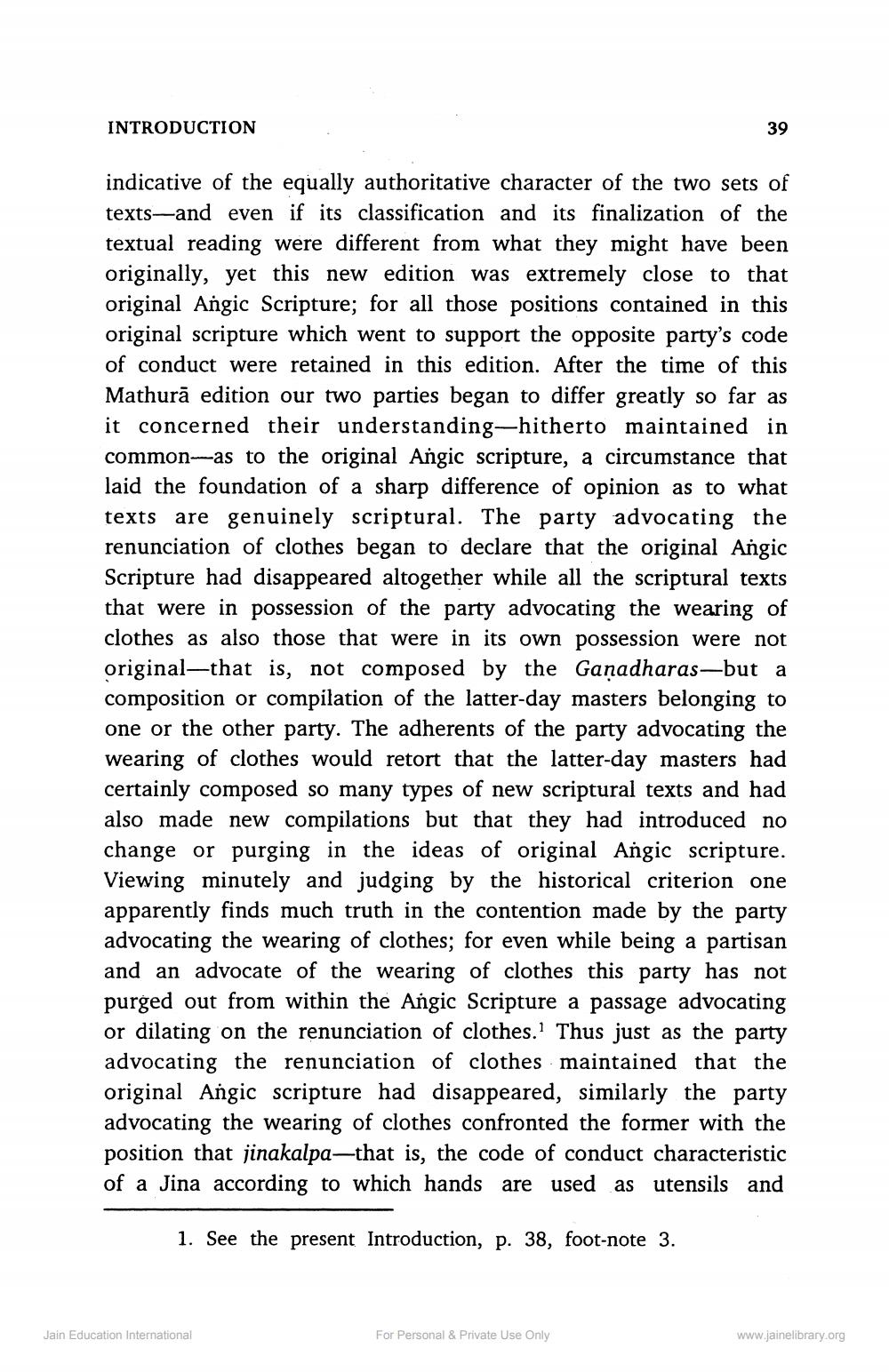________________
INTRODUCTION
39
indicative of the equally authoritative character of the two sets of texts—and even if its classification and its finalization of the textual reading were different from what they might have been originally, yet this new edition was extremely close to that original Angic Scripture; for all those positions contained in this original scripture which went to support the opposite party's code of conduct were retained in this edition. After the time of this Mathurā edition our two parties began to differ greatly so far as it concerned their understanding-hitherto maintained in common-as to the original Angic scripture, a circumstance that laid the foundation of a sharp difference of opinion as to what texts are genuinely scriptural. The party advocating the renunciation of clothes began to declare that the original Angic Scripture had disappeared altogether while all the scriptural texts that were in possession of the party advocating the wearing of clothes as also those that were in its own possession were not original—that is, not composed by the Gañadharas—but a composition or compilation of the latter-day masters belonging to one or the other party. The adherents of the party advocating the wearing of clothes would retort that the latter-day masters had certainly composed so many types of new scriptural texts and had also made new compilations but that they had introduced no change or purging in the ideas of original Angic scripture. Viewing minutely and judging by the historical criterion one apparently finds much truth in the contention made by the party advocating the wearing of clothes; for even while being a partisan and an advocate of the wearing of clothes this party has not purged out from within the Angic Scripture a passage advocating or dilating on the renunciation of clothes. Thus just as the party advocating the renunciation of clothes maintained that the original Angic scripture had disappeared, similarly the party advocating the wearing of clothes confronted the former with the position that jinakalpa—that is, the code of conduct characteristic of a Jina according to which hands are used as utensils and
1. See the present Introduction, p. 38, foot-note 3.
Jain Education International
For Personal & Private Use Only
www.jainelibrary.org




